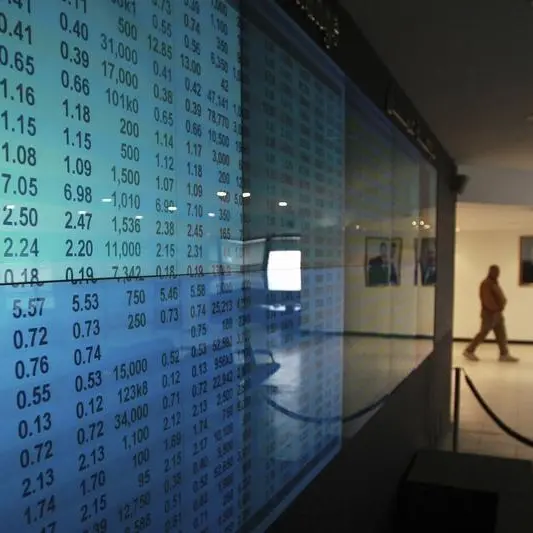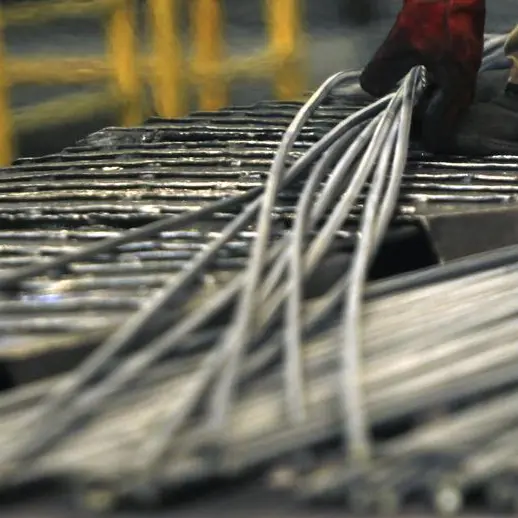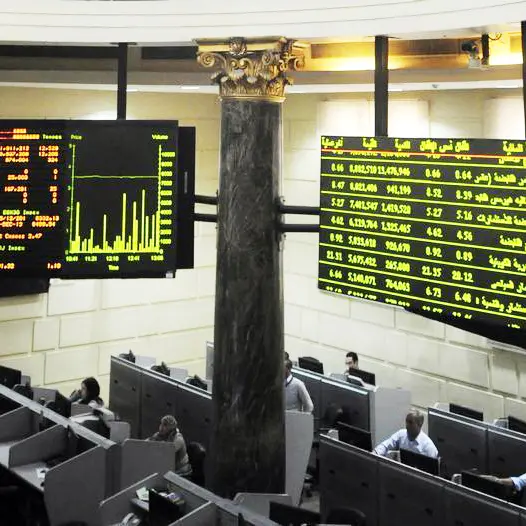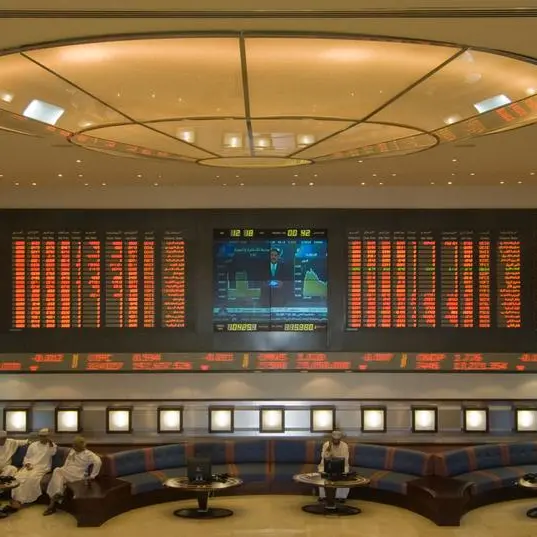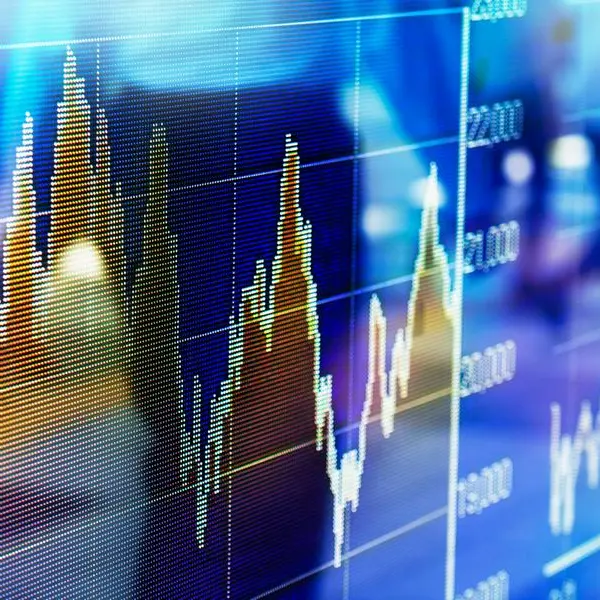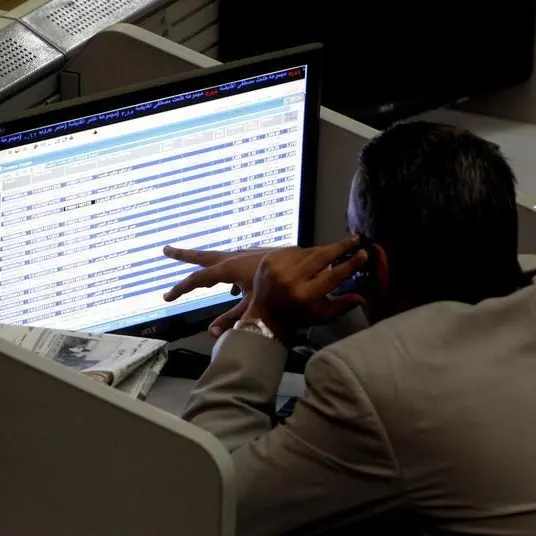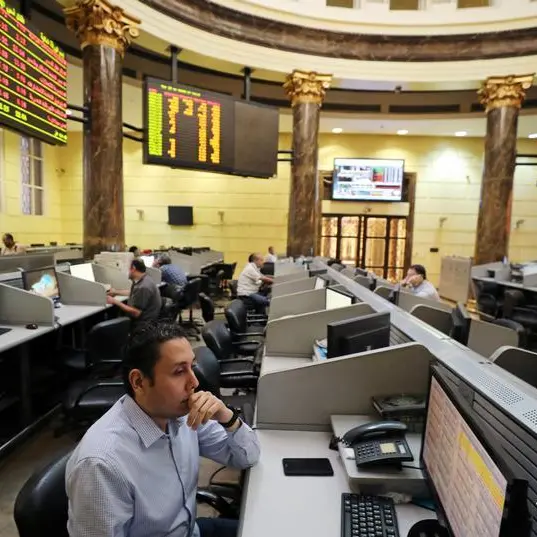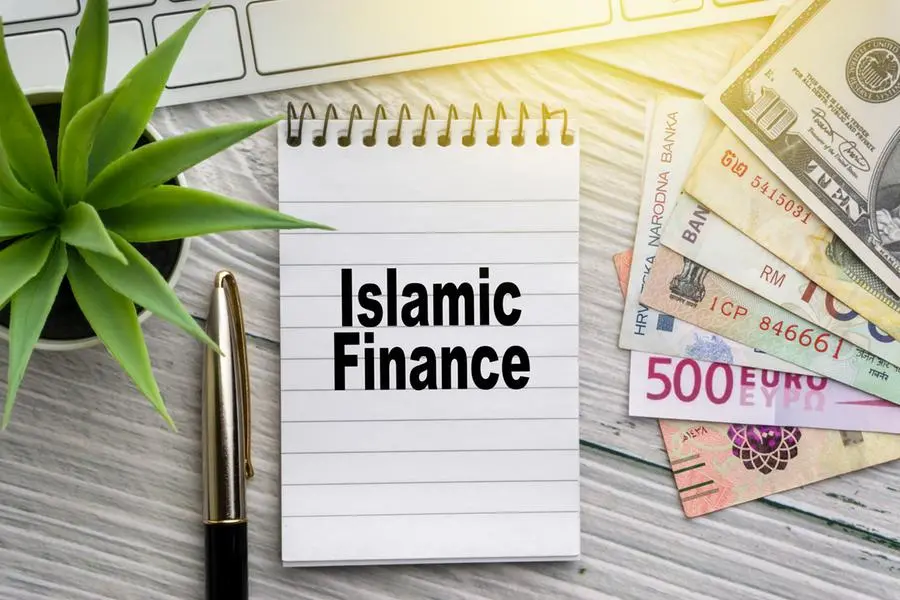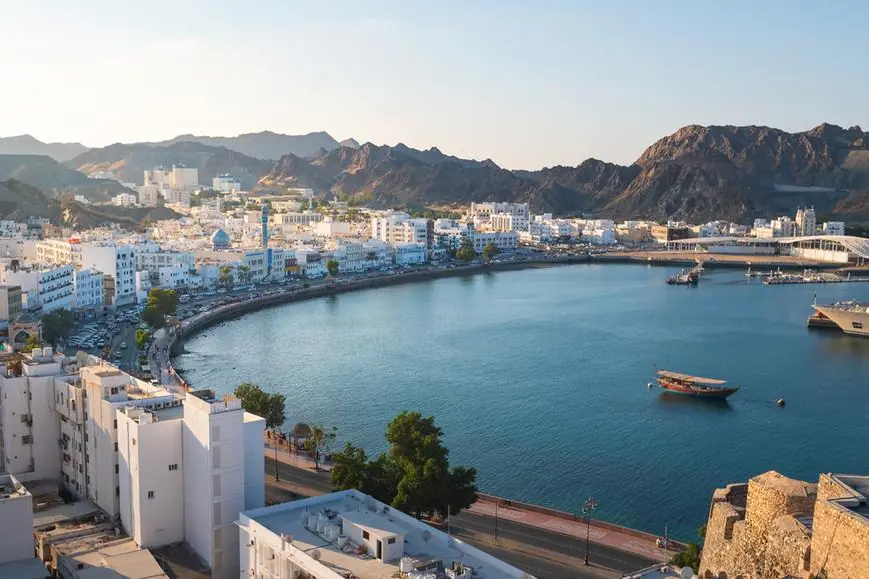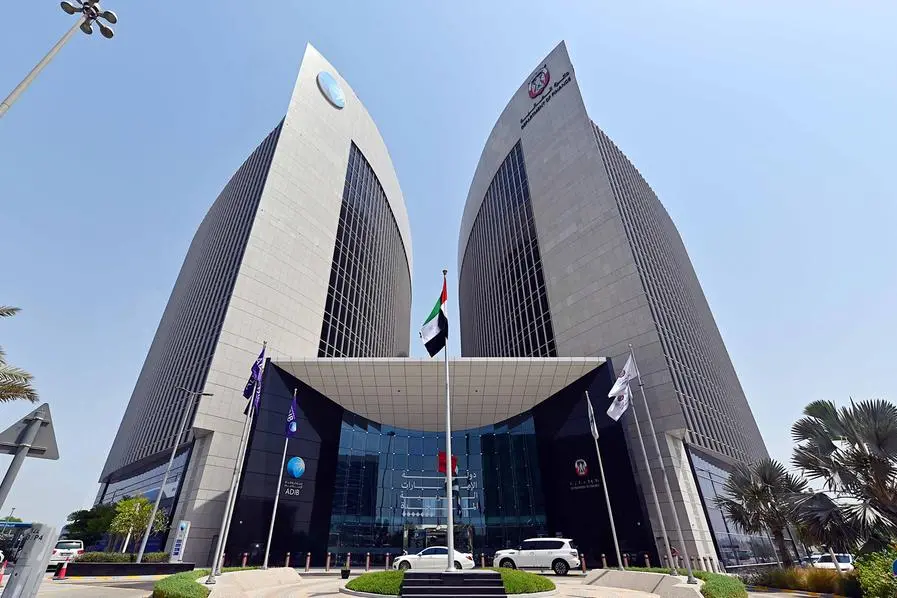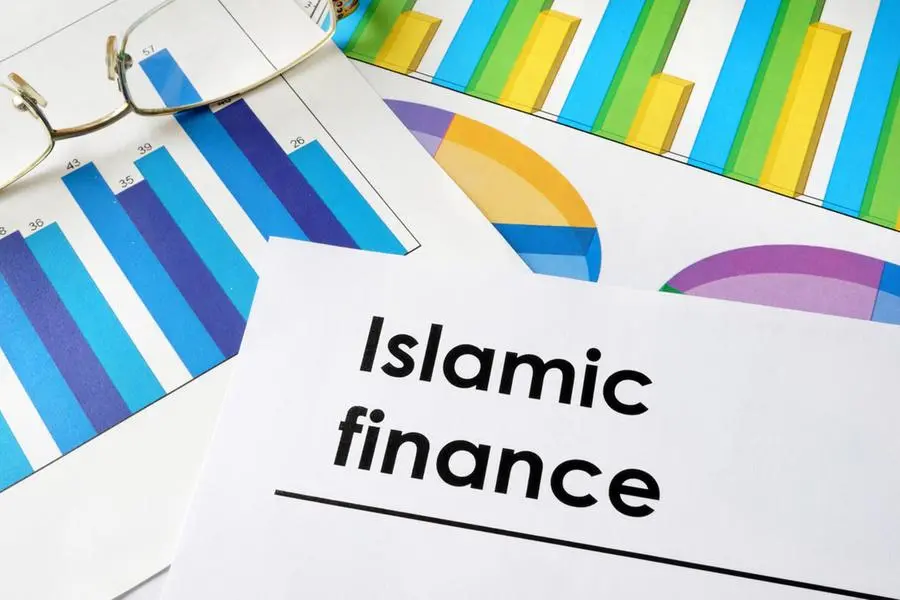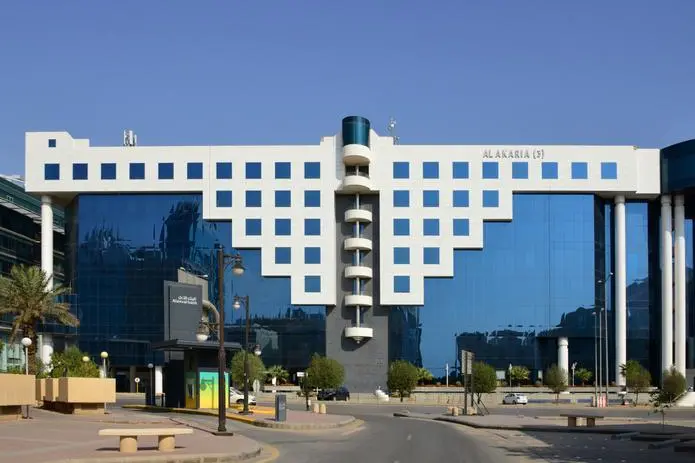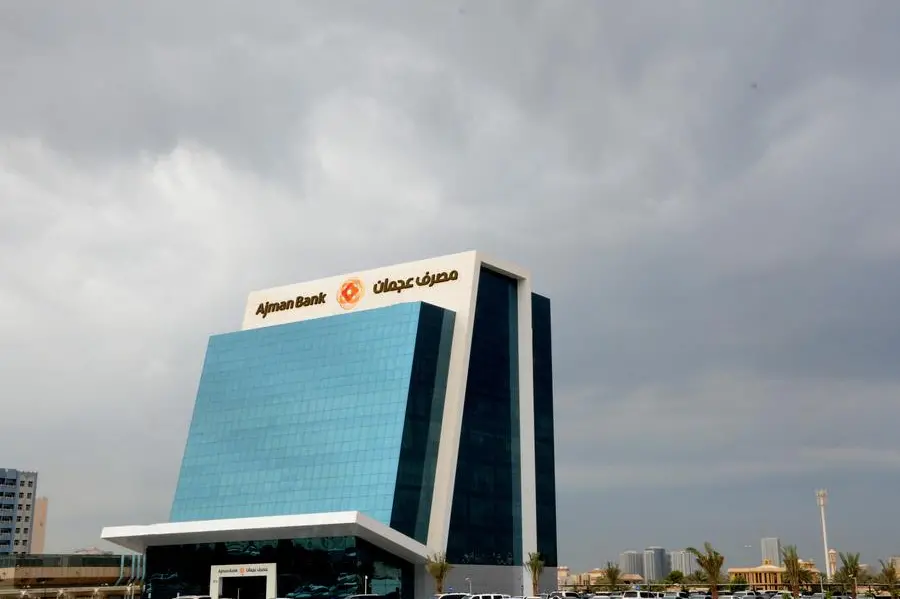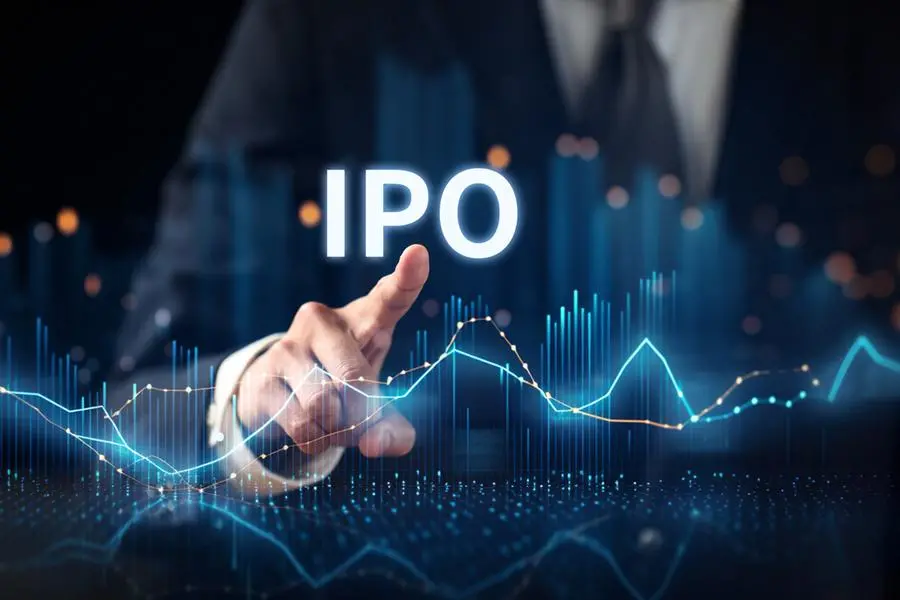PHOTO
A Kuwaiti investor looks onto the trading floor at the Kuwait Stock Exchange April 23, 2003 in Kuwait City, Kuwait. Image used for illustrative purposes.
The stellar returns enjoyed by investors in equity markets in the United States during the first six months of this year have generally not been replicated in Gulf markets, with only Kuwait’s Premier Market outperforming the S&P 500 index as investors bought into the country’s largest stocks in anticipation of an upgrade by MSCI from frontier to emerging market status, which was confirmed late last month.
The S&P 500 index increased in value by 17.2 percent during the first six months of 2019, which the broader MSCI World index of global stocks offered a return of 15.6 percent as investors continued to pile into equities during an elongated period of low interest rates, despite growing trade tensions between the world’s two biggest economies.
In the Gulf, only the Kuwait Premier Market outperformed global markets growth, recording a 20.21 percent increase in value, according to Eikon data.
According to Kamco Research, Gulf markets largely moved in line with global markets for most of the first half of 2019, but witnessed a sell-off in May as regional tensions heightened following attacks on a number of tankers in the Strait of Hormuz, leading to the U.S. military strengthening its presence in the region.
Saudi Arabia’s Tadawul All Share Index, for instance, peaked at 9,361.96 on May 1, before witnessing a sell-off of more than 10 percent as tensions flared. It subsequently recovered as the first phase of inclusion began for a number of its largest shares into the MSCI emerging market index. It finished the six-month period 13.1 percent higher at 8,821.76.
Mohamad Al-Hajj, vice-president and head of MENA strategy at EFG Hermes, told Zawya that the second phase of inclusion of MSCI stocks “has the potential to be bigger” than the inclusion that took place in May.
He explained that following the transfer of stakes from government-related entities to Saudi investment companies earlier this year, index compiler FTSE Russell increased the level of free-floating shares in these stocks to its index.
“If MSCI follows suit that could add $1.4 billion to the (inclusion) trade. If that materialises, the August trade could be a $7.8-$7.9 billion event, as opposed to a $6.5 billion event. And maybe that gets some investors more excited about it - particularly hedge funds,” he told Zawya in a telephone interview.
Despite this, he expressed concern that valuations of Saudi equities were “close to the peak”.
At the time of the interview, Saudi stocks were trading at a price-to-earnings ratio of 19.7x.
“We're around 4 percent away from a five-year high on the price-to-earnings ratio and valuations are 13-14 percent above the average,” Al-Hajj said.
A detailed breakdown of how each market performed, as well as the best - and worst – performing equities within each market can be accessed via the links below.
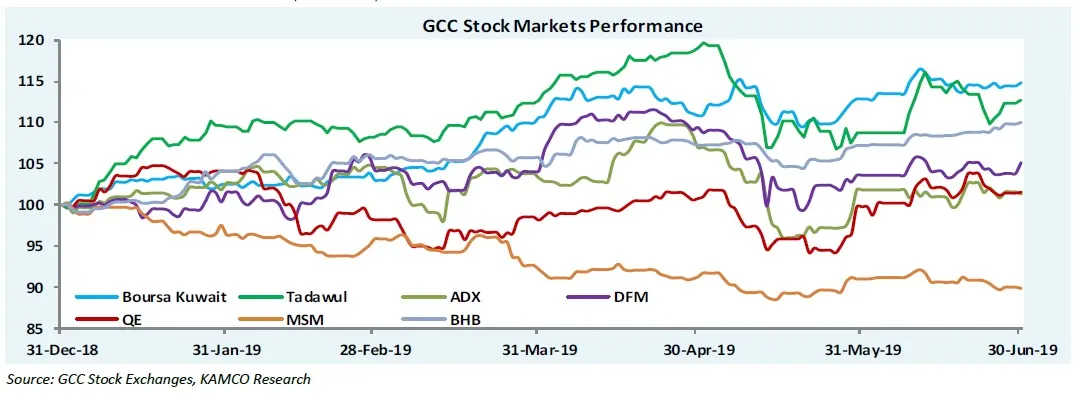

Click image to enlarge
KUWAIT
Kuwait’s Premier Market started the year strongly, with both traded values and volumes increasing following an upgrade in September and December last year to emerging market status by index compiler FTSE Russell.
It was the anticipation, and the subsequent announcement, of inclusion into the larger MSCI Emerging Markets index, which drove investment into Kuwaiti stocks, which explained the significant outperformance of the Premier Market index of the country’s biggest shares (up 20.21 percent) to its main market index (up 0.25 percent). Average daily traded volumes were also more than 4 times higher for the first six months of 2019, compared with the three-month period between April 2018 (when the index first began trading) and June 2018.
A research report published earlier this month by the National Bank of Kuwait said that economic growth in the country “is stuck in a modest 1-3 percent range”, which is below the regional average. It blamed this on the relatively greater size of its oil economy, which has been constrained by ongoing production cuts imposed under the OPEC+ agreement. Non-oil growth also remains muted given a lack of progress on reforms, but the MSCI upgrade “is expected to bring in about $2.8 billion in passive inflows and an estimated $7 billion in active inflows”, NBK’s report said.
Yet despite the exuberance over potential investor inflows once MSCI’s upgrade takes place (it is set to begin in May 2020, subject to meeting certain conditions) EFG Hermes’ Al Hajj argued that there were some strong fundamentals supporting investment in Kuwaiti stocks.
Firstly, they are cheaper on a fundamental basis than Saudi equities – a Kamco Research report showed Kuwait Premier Market stocks had a trailing 12-month price-to-earnings (p/e) ratio of 15.83 at the end of June, compared to a ratio of 17.62 for Saudi stocks.
“The difference also in Kuwait is the earnings CAGR (compound annual growth rate) we are expecting in our coverage over the next three years is around 13 percent per annum, mainly led by banks,” Al Hajj said.
He added that yields on Kuwait’s sovereign bonds had compressed to around 2.5 percent from 4 percent, meaning that dividend yields being offered on equities were now higher than bond yields.
“Kuwaiti equities are still attractive, relative to Kuwaiti bonds,” Al Hajj said.
The main gainer on the market during the period was industrial conglomerate National Industries, which reported a 46 percent increase in first-quarter net profit in May to 27 million Kuwaiti dinars ($88.7 million).
Kuwait Premier Market
Biggest gainers (01 Jan-30 June 2019)
- National Industries +50.9%
- Burgan Bank 31.3%
- Kuwait Finance House +28.1%
Biggest fallers
- Integrated Holdings -26%
- Boubyan Petrochemicals -10.2%
- GFH Financial Group -9.9%
SAUDI ARABIA
The Tadawul index is another where investors have looked to ride a wave of investment as the country’s stock market continues to benefit from investor inflows as its leading stocks are incorporated into the FTSE Russell, S&P Dow Jones and MSCI emerging market indices.
The FTSE Russell inclusion began in March this year and is taking place over five phases, concluding in March next year. The two-phase S&P Dow Jones Inclusion also began in March and will conclude in September. Inclusion into MSCI’s emerging markets, which is the biggest and most significant of the three, began in May and
According to the Institute of International Finance, Saudi Arabia’s stock market benefited from an inflow of foreign equity investment of $4.5 billion in May, which brought the total for the first five months of the year to $10.8 billion.
In a note published at the start of July, the head of Bank of America Merrill Lynch’s MENA and frontier markets research, Hootan Yazhari, said that it expects $13 billion of passive flows into the Saudi market as a result of the MSCI inclusion, with a further $6.5 billion being invested into individual Saudi stocks that will be included into the index.
The FTSE Russell upgrade will also lead to $6.5 billion of passive inflows into the Saudi market, Yazhari added.
EFG Hermes’ Al-Hajj said “it's not a big surprise that active participation has been weak” given the current high valuations attached to Saudi equities.
“At these levels, maybe they are not finding a lot of appealing stories.”
However, he argued that there are firms such as retailers Extra and Jarir that have compelling reasons for investment, given an uptick in consumer spending in the kingdom and Saudisation policies that favour the formal retail sector over informal stores.
In terms of stock performance, the cement sector has benefitted from higher sale prices and a slight improvement in volumes, which were up 5.2% in the kingdom during the first six months of 2019, according to National Bank of Kuwait. Six of the top ten performing shares on Tadawul in the first half of 2019 were cement companies. Telecoms companies have also benefited from reduced royalty payments.
Tadawul All-Share Index
Biggest gainers (01 Jan-30 June 2019)
- Zain KSA +53.2%
- Saudi Cement Company +47.7%
- Eastern Province Cement +47.3%
Biggest fallers
- Saudi Enaya Cooperative Insurance -45.2%
- Al Sorayai Trading -33.6%
- Amana Cooperative Insurance -33.4%


Click image to enlarge
BAHRAIN
The Bahrain Bourse was the third-best performing market during the first half of the year, enjoying a gain of 10.7 percent, according to Eikon data. Appearances can be deceptive, though, as most of the gains can be attributed to the performance of a single stock – Ahli United Bank (AUB).
The lender is currently the subject of a merger with Kuwait Finance House, which would see its shares acquired for a premium. This, and a decent set of first quarter results, pushed the lender’s shares 39.8 percent higher during the first half of the year, contributing to a 22 percent increase in the overall value of the market’s commercial banking sector.
Should the merger go through, AUB’s shares will eventually be removed from the exchange, which could make it a less attractive venue for investors. As of July 16, Ahli United Bank’s market capitalisation of 3.13 billion Bahraini dinars ($8.2 billion) represented one-third of the bourse’s total market capitalisation of 9.46 billion dinars, according to Eikon data. It is also almost three times the size of the index’s next-biggest stock, National Bank of Bahrain, which has a market capitalisation of 1.06 billion dinars.
“Once the merger concludes, I think you will end up with four major GCC markets and then Bahrain and Oman,” said Mohamad Al-Hajj of EFG Hermes.
The main gainer on the exchange during the first half of the year was Esterad Investment, a general investment firm in which Manarat Investment and National Bank of Bahrain hold stakes. On Tuesday, the company announced a 168 percent increase in half-year profits for 2019 to 945,696 dinars, up from 352,054 dinars for the same period last year. The company also won an auction last month to develop the twin-tower Amwaj Gateway project in Bahrain.
Bahrain Bourse
Biggest gainers (01 Jan-30 June 2019)
- Esterad Investment Co +56.3%
- Ahli United Bank +39.8
- Bahrain Commercial Facilities +33.1%
Biggest fallers
- Aluminium Bahrain -29.9%
- Ithmaar Holding -27.8%
- Bahrain Cinema -23.9%
DUBAI
Given the 26 percent decline in value experienced by the Dubai Financial Market (DFM) last year, a 5.5 percent uplift during the first half of this year is respectable, even if it is below the 9.2% return achieved by MSCI’s global emerging markets index.
The Abu Dhabi Securities Exchange index (ADX) also ended the six-month period in positive territory, up 2.3 percent.
Iyad Abu Hweij, managing director of Allied Investment Partners, explained that both markets had witnessed strong (11 percent -plus) gains during the first four months of the year, but experienced sell-offs in May as regional tensions mounted before recovering lost ground in June.
“We have seen both the DFMGI and ADSMI perform positively in the first half of 2019, peaking in April and recovering from May’s losses in June,” he said in emailed comments to Zawya.
Abu Hweij said that price movements had been governed both by “the general macroeconomic environment and geopolitical events”, but added that there had been significant differences between company valuations and performance within certain sectors.
In real estate, for instance, Aldar Properties was the third-best performer on the Abu Dhabi Exchange as its shares gained by 19.6 percent and Emaar Properties was the sixth-best performer in Dubai (up 11 percent) but overall conditions in the real estate market have show few signs of improvement (read more here) and all other listed developers continued to experience Damac Properties has been the worst performer on the DFM. (Read more here).
Yogesh Khairajani, an investment research analyst at Dubai-based broker Century Financial, said that Aldar’s results were boosted by a strong performance from its asset management arm, whose results were boosted by the opening of the extende Al Jimi Mall in Al Ain and by various events in the capital including the Special Olympics games and the visit of Pope Francis.
“The investment case of Aldar is strengthened by its strong balance sheet, which will aid in further acquisitions or raising of dividends,” Khairajani said.
In contrast, Damac Properties “had a dismal first quarter where profits plunged by 94 percent due to excess supply in the property market”, Khairajani said, adding that cash flow issues linked to debt repayments mean that any dividend payments in the short term are unlikely.
In terms of stocks that could potentially outperform, Khairajani highlights Dubai’s biggest lender, Emirates NBD – partly because of its growing international presence, but also because “the bank is expected to raise its foreign ownership limit and capital gains will be realised from sale of its stake in Network International”.
Abu Hweij, meanwhile, highlights rival lender Abu Dhabi Commercial Bank and developer Emaar Properties.
“Both stocks provide impressive dividend yields and have a P/E ratio below their respective market’s P/E ratio,” he said.
Abu Dhabi Securities Exchange
Biggest gainers (01 Jan-30 June 2019)
- International Holding Co +44.9%
- Abu Dhabi Shipbuilding +41%
- Aldar Properties +19.6%
Biggest fallers
- Waha Capital -47.8%
- Abu Dhabi National Takaful -34.9%
- Abu Dhabi National Energy (Taqa) -26.7%
Dubai Financial Market
Biggest gainers (01 Jan-30 June 2019)
- Salama Islamic Arab Insurance +29.7%
- Dar Al Takaful +28.2%
- Emirates NBD +27.5%
Biggest fallers
- Damac Properties -38.3%
- Gulf General Investment Co -35.7%
- Amlak Finance -24.9%
Qatar
It is perhaps not surprising that the Qatar stock exchange has largely traded sideways during the first half of 2019 (+1.7%) despite an improving macroeconomic environment given the strong gains made last year, as the lifting of foreign ownership limits in a number of key stocks led to an inflow of around $2.3 billion of foreign investment (Read more here).
A National Bank of Kuwait research report on the economic outlook for Qatar published earlier this month said GDP growth for 2019 is likely to lift to 2.6 percent this year, up from 1.6% in 2018. A recovery in the non-oil economy (which shrank by 2 percent last year but is expected to grow by 0.4% in 2019) will help, as will continued growth in the non-oil economy facilitated by public sector investment. The non-oil economy is predicted to grow by 4.4% this year, marginally below the 4.9% non-oil growth achieved last year.
An International Monetary Fund assessment of Qatar’s economy published last month stated that Qatar’s economy had “successfully adjusted to the dual shocks of lower oil prices and diplomatic rift”.
It said that over the medium term, fiscal consolidation would help to close the country’s current account gap, suggesting that enhancing non-oil revenue, including the introduction of a value-added tax “should continue to be at the centre of reforms for a broad-based tax system”.
A Kamco Research report on GCC equities markets published earlier this month stated that the telecoms index of the Qatari market was the best performing in June, rising by 8%. However, during the course of the year, telecoms stocks have been among the market’s worst performers.
In February, Ooredoo announced full-year results which showed a 30 percent decline in its global customer base to 115 million. Net profit also fell by 18 percent to 1.56 billion Qatari riyals.
Industries Qatar was also among the market’s laggards, as its first quarter profit dropped 44 percent to 700 million riyals, down from 1.3 billion riyals a year earlier.
Qatar Stock Exchange
Biggest gainers (01 Jan-30 June 2019)
- Mesaieed Petrochemical Holdings +57.9%
- Qatar Fuel Co (Woqod) +29.8%
- Qatar Gas Transport +29.7%
Biggest fallers
- Ooredoo -13.3%
- Industries Qatar -12.6%
- Vodafone Qatar -10%
OMAN
Oman’s stock market was the only one of the Gulf markets to decline in value during the first half of 2019. The Muscat Securities Exchange General Index declined in value by 10.4 percent, which followed a 15.2 percent decline last year (Read more here).
“Oman is not in the best position from a macro perspective because it has one of the highest breakeven oil prices,” said Mohamad Al Hajj, vice-president and head of MENA strategy at EFG Hermes.
The International Monetary Fund’s regional economic outlook published in April this year forecast a breakeven oil price of $97 per barrel for Oman, compared to $94.90 for Bahrain, $85.40 for Saudi Arabia, $65 for the United Arab Emirates, $48.80 for Kuwait and $48.70 for Qatar. In the year to July 16, Brent crude oil prices have averaged around $66 per barrel.
Earlier this month, the IMF said that economic activity in Oman is “gradually recovering”, with non-oil GDP recovering to 1.5 percent last year from 0.5 percent in 2017. Yet it warned that “macroeconomic vulnerabilities continued to rise”, with government debts increasing, causing downgrades to the country’s sovereign rating, and some fiscal reforms being delayed.
Yet Shaheen Biran, a senior management within Muscat-based United Securities’ asset management division, believes that the sell-off of Omani equities means there are now bargains to be had. She said that stocks are trading at a price-to-earnings (p/e) ratio of about 7.7x, considerably lower than the near-20x that Saudi equities at which Saudi equities currently trade.
She believes that “you will definitely see an improvement” in valuations of Omani equities once the inclusion story currently underway in Saudi Arabia plays out and managers of GCC equity funds begin to look elsewhere for profits.
“If you actually look at the valuations, the Oman market is very attractive,” she told Zawya during a telephone interview.
Al-Hajj is not so sure.
“With Oman, there is no strong catalyst even though valuations are not expensive and are the cheapest next to Dubai,” he said.
A Kamco Research report on GCC markets stated that trailing 12-month p/e for the Oman market at the end of June was 8.7x, while the Dubai Financial Market was almost 7.3x.
“If you really want to buy value in the GCC then you go and buy Dubai, because Dubai is trading at 7x earnings but definitely the sovereign position is much better,” Al-Hajj said.
In terms of individual equities, the top performers have been Al Anwar Ceramics, whose shares were boosted by strong results. On July 11, the company announced half-year profits had more than doubled to 1.05 million Omani rials ($2.7 million) although revenue was flat at 10.7 million rials.
Renaissance Services, which announced the sale of its Topaz Marine oil and gas marine business to DP World for $1.08 billion earlier this month, also benefitted from significantly improved performance, as its net profit after tax (excluding a one-off tax benefit last year) trebled to nearly 2 million rials as revenue increased by 9.8% to $51.5 million.
Making up the top three was Oman Fisheries – a (relatively) heavily-traded stock that was the worst performer last year, but the third-best this year as its results improved.
Bireen said the company is the only listed stock offering exposure to the fisheries sector, which is a key priority for the Sultanate’s government. She said the fisheries sector was valued at just 225 million rials in 2016 but is expected to grow to around 1.3 billion rials in 2023.
Muscat Securities Market
Biggest gainers (01 Jan-30 June 2019)
- Al Anwar Ceramic tiles +41.1%
- Renaissance Services +25.4%
- Oman Fisheries +12.7%
Biggest fallers
- Sembcorp Salalah -41.8%
- National Gas Company -35.8%
- Al Madina Investments -35.1%
(Writing by Michael Fahy, editing by seban.scaria seban.scaria@refinitiv.com)
Our Standards: The Thomson Reuters Trust Principles
Disclaimer: This article is provided for informational purposes only. The content does not provide tax, legal or investment advice or opinion regarding the suitability, value or profitability of any particular security, portfolio or investment strategy. Read our full disclaimer policy here.
© ZAWYA 2019

